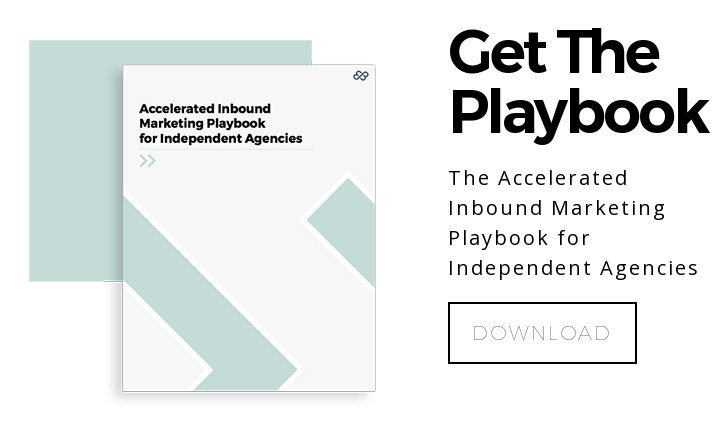10 Ways To Improve Your ROP (Return On Proposal)

When the right creative, design or digital firm meets the right buyer, beautiful things happen. Projects flourish. Budgets are adhered to. Praise flows from the top down. But getting there? Too often, it’s a drawn-out, stressful process—one that costs both sides time, money, and human resources. I know it can be improved. And once it’s improved, the ROP (return on proposal) that both sides see will be so much better.
There are challenges and bad habits on both sides. And as an intermediary between the sides, even I am to blame for sometimes giving in to the behaviors that stall and devalue the proposal process.
Agency-Side RFP Improvements
I have five proposals for firms and five for buyers. The sets of ideas are connected, like two sides of the same coin. Let’s get into them.
For creative and related firms: there is a way to get a better return on the thoughtful proposals you put together for projects you want to do.
1. Maintain Leverage, Don’t Be The Leverage. My friend, sometimes, the proposal is all the leverage we have. Use it. In presenting, let’s lead with our top-notch thinking, process and work. Our intellectual capital and related pricing is the last thing we should ever hand over, not without a commitment (see #4).
2. Questions Upon Questions. Ask a lot of questions. You know the type of client you want. You have worked with them in past and likely still do. My clients are strategic in approach, collaborative by nature and think long term. If a potential client does not fit the criteria, I should move on. We have all made the mistake of getting away from this type of discipline, and our habits are leading neither to profitable projects or nor great relationships.
3. Meet The Decision-Maker At All Costs. No, I mean the real decision maker. I #fail here often, by tricking myself into thinking that the person I am pitching and meeting with is the person that can make things happen. Why do I jedi-mind trick myself? For fear of pushing too hard, losing the deal etc. I maintain that the chances of winning a project is 20-30% higher, if I get in front of the decision-maker. So when we submit proposals, let’s insist on meeting with the real decision-maker.
4. Budget Talk. When I was on a trading desk on Wall Street, if a customer asked me for a price on a security and I gave them one and they did not buy or counter, I’d be in big trouble. Why? Because we should never be asked to fully reveal ourselves, without the promise of a counter offer. If a counter does not materialize, they were never a real buyer in the first place. They were only comparison shopping or using us as leverage (see #1) with their preferred relationship.
5. The Power Of No Thanks. This one is hard. I know. I feel you. I was never great at dating, because I was terrible at playing hard to get. I usually fell in love at first sight, inherently trusting everyone I met. This was not a great recipe for staying sane then, and the same is true when engaging in a proposal process. It sounds cliché, but if we respect ourselves and say no to terms or projects that don’t fit, so will the buyer.
Buyer-Side RFP Improvements
For buyers: there is a better way to get what you need upfront, have increased respect for the firms you engage, and land the optimal partnership for your needs.
1. Narrow Down The Field. Tools like Webex, Skype, Prezi and a host of other applications allow for easy, human-to-human presentations online to review process, pricing and case studies. Much of the vetting can be done at this stage before the blind RFP goes out. Now, on the RFP point and why that matters.
2. Rethink An RFP. Let’s kill the mystery. What is your rationale for sending out the RFP? If it is to provide a veneer of having done due diligence, to pressure an existing relationship, to satisfy management, or to provide price discovery, be transparent about that. Or try to narrow down the field first (see #1). If price is important, let potential partners know the budget range.
3. Ask Questions Based On Business Goals. Ask a lot of questions (see #1). The top creative, design and digital firms provide a collaborative, iterative process with set milestones and a strategy for how they approach a business problem. Have your potential partner describe their process to solving problems, and how it applies to yours. The process is more structured than you might think, and this will help you understand the value driving their pricing.
4. Get The Decision-Maker Involved. Things get lost in translation. A 30-minute Webex never killed anyone, especially if the project involves a six-figure budget and mission-critical deliverables like a refreshed brand or a new website. I have seen project budgets increased by having the decision-maker understand each potential partner’s POV. Don’t “shelter” them from the process; in the end, it doesn’t help either side.
5. Provide A Counteroffer. There seems to be some overall fear around revealing budget. Like most fears we have, this fear is unfounded. If you want the relationship, experience has taught me having the budget discussion upfront will allow a firm to provide better advice on how to reverse engineer and optimize a given budget.
These are not foolproof rules of engagement, but I can guarantee they will save us all time—and, by definition, money—in the long term.
So let’s start being more honest. Markets work more efficiently when there is a free flow of information between buyers and sellers. The same goes for the market for design and creative technology services.
The partnerships meant to work out will work out. And both sides will be the happier and more successful for it.



